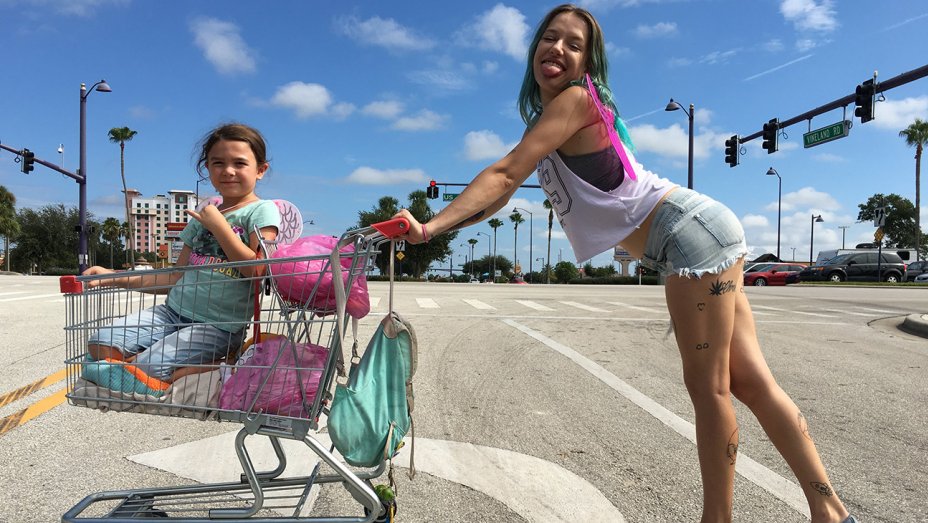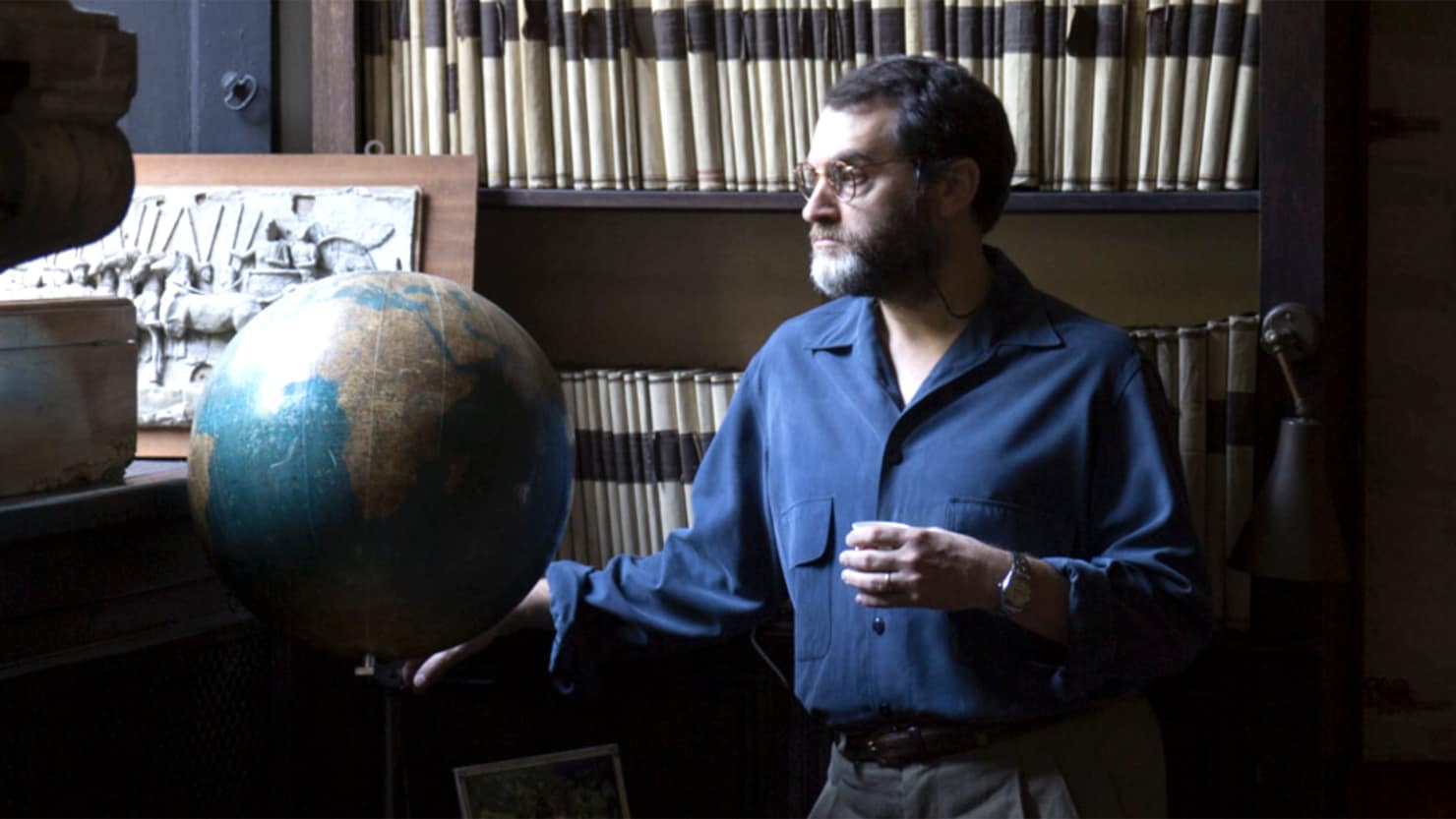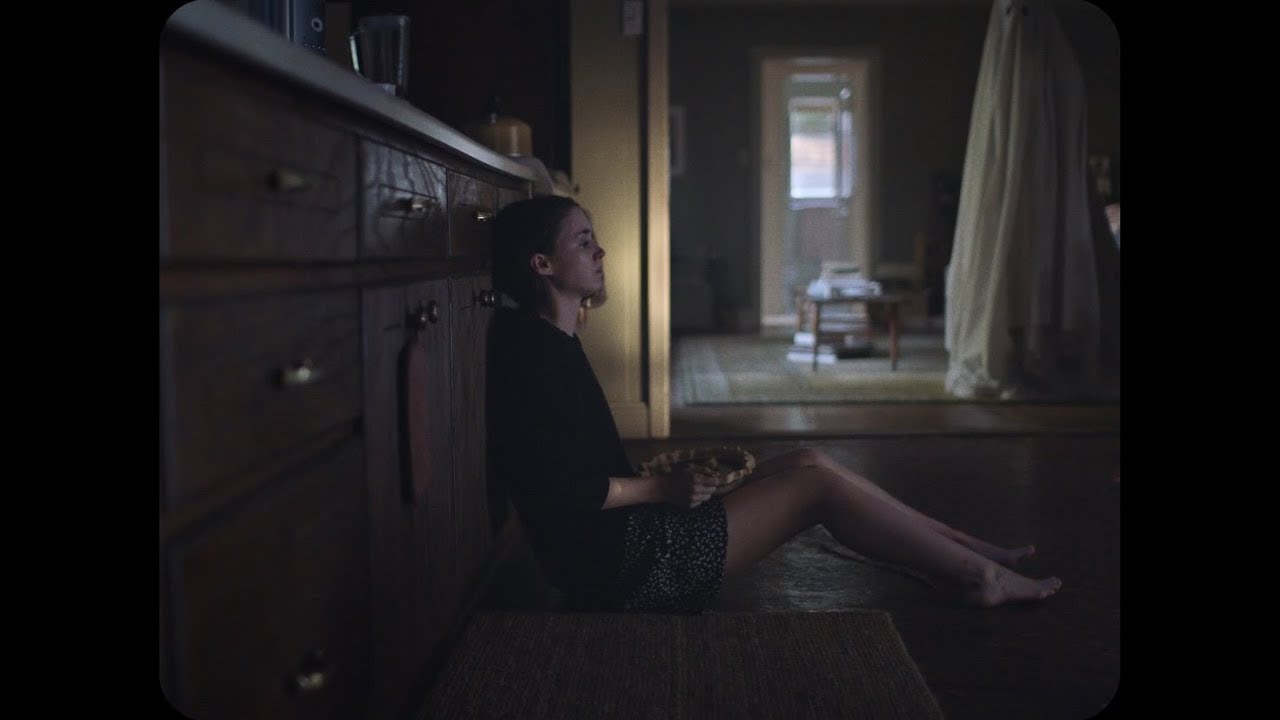5. Kim tries to persuade Martin – The Killing of a Sacred Deer

Yorgos Lanthimos is an emerging modern master. His latest film The Killing of a Sacred Deer is a blend of dark comedy and horror; an off-kilter retelling of the Greek tragedy Iphigenia at Aulis. In the film, Colin Farrell plays Steven, a surgeon who is cursed by a mysterious God-like boy, Martin, who tells him that his entire family will slowly die if he doesn’t sacrifice one of the members. Lanthimos draws on the cinematic styles of Kubrick and Bunuel, and the inspiration of both of these filmmakers is evident in the film’s best scene.
Steven’s daughter Kim, whose legs are already paralysed from the curse, drags herself down to the basement where Martin is tied up by Steven to convince him to let her live. She lights a cigarette for him and asks to run away with him while her family is asleep. What gives the scene its haunting complexity and dark humour is the way it’s structured.
Clips and voice-over from Kim after she gets taken home by her parents is spliced in and superimposed over her unsuccessful attempt to persuade Martin, as well as her parents journey to find her. The way she sucks up to her parents gives an uncomfortable commentary of sorts of what we see of her conversation with Martin, made all the more interesting coming right after the scene where the mother (Nicole Kidman) tells Steven that the “only logical solution is a kill a child”.
The way her the shallow focus is on Kim’s face in the basement, with sweat, fire, and smoke disrupting the grain structure of the 35mm film is gorgeous, combined with the cold colour palette. The shot of her lighting Martin’s cigarette is probably one of the best single frames from any movie last year.
4. Escape to Magic Kingdom – The Florida Project

Sean Baker shot his last film, Tangerine, entirely on an iPhone. His latest feature The Florida Project went back to old-fashioned 35mm film, but for the ending he again employed an iPhone, which adds a level of contradictory surrealism and rawness to it.
The moments leading up to the switch to digital is shown by cutting back and forth between the multiple characters. The little girl Moonee being taken away from her mother Hailey, Bobby the motel manager comforting Moonee, Child Support Services trying to calm down Moonee… Bobby stands alone in deep thought, as sounds of chaos from Hailey, Moonee and Child Support Services play out in the background.
Then we follow Moonee, she runs to her friend Jancey and desperately cries at the door. A moment of heightened realism happens, akin to the boxing scenes in Raging Bull and we rest on Moonee and Jancey’s faces, cutting between them. Then, we swtich to iPhone footage, Jancey takes Moonee’s hand and the two girls run into Disneyworld Magic Kingdom and hide in a crowd of people in front of Cinderella Castle.
In a film exploring the lives of people living in poverty right next to the ‘happiest place in the world’, and with the audience following the story of primarily kids, there is no better ending than to suggest a happier time, point towards hope for at least some people. For the duration of the film, Moonee has always found joy in whatever is around her despite her circumstances; she is the princess of her own kingdom. The ending affirms that magic is all around us, and the magic of children lights up their own paths.
3. Mr. Perlman’s Monologue – Call Me By Your Name

Call Me By Your Name is probably the best film of last year (alongside The Florida Project, coming up in this list). It ends with an emotional punch to the gut, of the good kind. After the affair that Elio and Oliver have over the summer of 1983 in Northern Italy, Elio is filled with melancholia, confusion and sadness for it all to end, for time to ruin the beauty and love (and so are we). His father Mr. Perlman (played by 2017’s standout supporting actor Michael Stuhlbarg) delivers an understanding and encouraging monologue to his son as the two characters sit on the couch.
The film has been leading up to a moment of catharsis, and how unexpected was it for Mr. Perlman to be the one to deliver it. Sayombhu Mukdeeprom’s sensual cinematography lends the scene, and the entire movie, a sense of warmth and tenderness. Stuhlbarg’s delivery is raw and goes right to your heart. He talks about the love that Elio and Oliver had, how it is special, and reminisces his own youth, when he craved for such a relationship as theirs.
I have nothing more to say, other than to leave you the very words of Mr. Perlman: “We rip out so much of ourselves to be cured of things faster than we should that we go bankrupt by the age of 30 and have less to offer each time we start with someone new. But to feel nothing so as not to feel anything- what a waste!”
2. JOI and K Make Love – Blade Runner 2049

Many audience members exited Blade Runner 2049 raving about how mesmerising this scene was. Not only is it a mind-boggling technical achievement, it also explores one of the main themes in the film. The first Blade Runner was about memory and sympathy, while 2049 still explores the nature and malleability of memory it delves into love. For each character, love means something different. For Joi, love is about giving all you can give. In this scene, she invites a human prostitute (played by Mackenzie Davis) to be a host to her hologram body, in order to have sex with K.
With shades of Spike Jonze’s Her in there, this scene shows that physical connection is important for the confirmation of one’s love. For K to truly believe that Joi loves him, they must engage in physical contact. The scene is slow-paced, shot masterfully by Roger Deakins- the matching (and mis-matching) of actions by Joi and the prostitute is a wonder for you eyes to behold and and the hallucinatory score gives it the tender undercurrent suitable for a sequence of love.
1. M eats a pie – A Ghost Story

David Lowery’s mediative look on life and death partially deals with grief, and how one deals with the death of a loved one. The film is about a couple, C (Casey Affleck) and M (Rooney Mara), who live together in a small house in the American outback. When C dies, he returns to the house as a ghost (played by Affleck with a white sheet covering his entire body…) and watches over his wife.
In a scene of mourning, we watch M sit on the kitchen floor and eat a huge pie for more than 5 minutes straight before rushing to the bathroom to throw up. The ghost of C slowly appears in the frame as the camera pushes towards M. The scene is simple in conception, and a little absurd, but works brilliantly as a look at grief.
It’s emotional and haunting; and the sort of scene rare to see in a modern film, even if it’s an American indie. It brings to mind something that Ingmar Bergman, Béla Tarr or Andrei Tarkovsky would put on screen. Mara’s subtle performance is powerful and moving, and Lowery calls the scene the proudest of anything he’s ever directed.